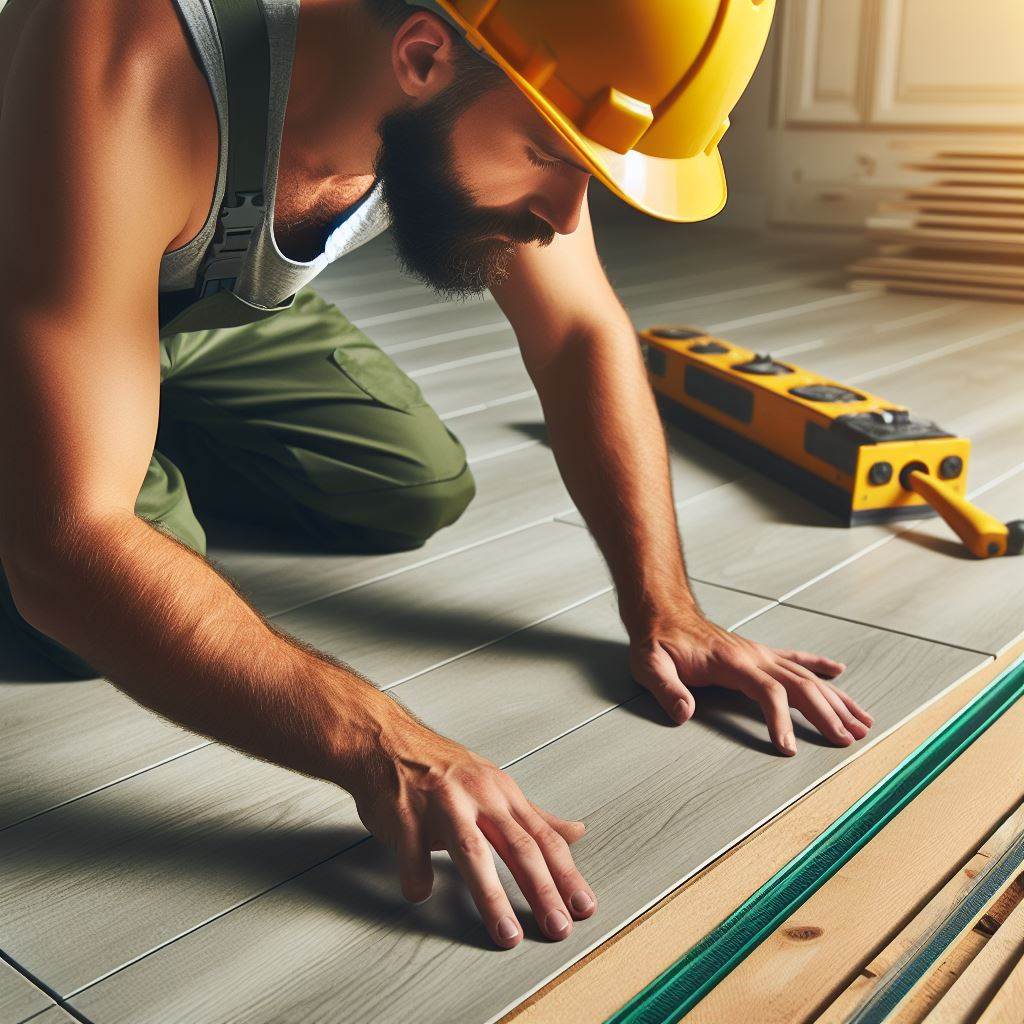Introduction
Eco Friendly Home Insulation Tips: Insulating your home is a vital step towards improving energy efficiency and reducing your carbon footprint.
By properly insulating your home, you can create a comfortable indoor environment while minimizing the need for excessive heating or cooling.
Not only does this help save on energy costs, but it also contributes to reducing greenhouse gas emissions.
In recent years, there has been a growing trend towards eco-friendly home insulation methods.
This shift in preference is fueled by the increasing awareness of the environmental impact of traditional insulation materials.
Eco-friendly insulation materials are typically made from renewable resources, such as cellulose, recycled denim, sheep’s wool, or cork.
These materials have several advantages over their conventional counterparts.
They are non-toxic, safe to install, and do not release harmful gases or particles into the air.
Additionally, they have excellent thermal insulation properties and can effectively regulate indoor temperatures throughout the year.
Eco-friendly insulation also tends to be more durable and can have a longer lifespan compared to traditional options.
Furthermore, eco-friendly insulation contributes to creating healthier indoor environments.
It helps reduce moisture buildup and the growth of mold or mildew, which can cause respiratory issues.
By choosing sustainable insulation materials, homeowners can improve the overall air quality within their homes and promote a healthier living space.
In fact, eco-friendly home insulation is gaining popularity due to its positive impact on energy efficiency, environmental sustainability, and indoor air quality.
As more people become aware of the benefits, the demand for eco-friendly insulation options continues to grow.
Types of Eco-Friendly Home Insulation
In order to make your home energy efficient and environmentally friendly, it is essential to choose the right insulation.
Eco-friendly home insulation not only helps reduce energy consumption but also minimizes your carbon footprint.
There are various types of eco-friendly insulation materials available, each with its own advantages and considerations.
Let’s explore the different types to help you make an informed decision.
Natural Fiber Insulation
Natural fiber insulation is made from materials such as cotton, wool, and hemp.
These materials are renewable, biodegradable, and have excellent thermal performance.
Cotton insulation is made from recycled cotton fibers and comes in the form of batts or loose-fill.
Wool insulation, derived from sheep’s wool, has excellent noise reduction properties and is resistant to fire and mold.
Hemp insulation, made from the fast-growing hemp plant, is an excellent thermal insulator and has natural pest control properties.
The benefits of using natural fiber insulation are numerous.
Firstly, these materials are renewable resources, making them a sustainable choice.
They also have excellent noise reduction capabilities, creating a peaceful indoor environment.
Moreover, natural fiber insulation does not contain any harmful chemicals, ensuring better indoor air quality.
During the installation process, there are a few considerations to keep in mind.
Natural fibers can cause skin irritation, so be sure to wear protective clothing during installation.
Additionally, ensure proper ventilation to avoid excess moisture accumulation.
It is important to follow the manufacturer’s guidelines and consult professionals if necessary.
Recycled Insulation Materials
Its materials include recycled denim, newspapers, and cellulose.
Recycled denim insulation is made from recycled jeans, which are shredded and treated with a fire retardant.
This type of insulation offers excellent thermal performance and noise reduction.
Newspaper insulation is made from recycled newspapers and is typically treated with borate for fire and pest resistance.
Cellulose insulation is made from recycled paper products and is treated with chemicals to resist fire and pests.
Using recycled insulation materials helps reduce waste and energy consumption.
By diverting these materials from landfills, you contribute to a more sustainable future.
Additionally, recycled insulation provides effective thermal insulation and helps regulate indoor temperatures.
Proper installation is crucial for achieving the desired insulation performance.
Ensure that the insulation material is properly packed and installed without gaps.
Proper air sealing is also important to prevent air leakage that can affect the insulation’s efficiency.
Consulting professionals or following installation guidelines will help you achieve optimal results.
Spray Foam Insulation
Spray foam insulation is a popular choice for eco-friendly homes.
Low VOC (volatile organic compound) spray foam is made from renewable resources and helps reduce energy consumption.
It provides excellent thermal resistance and air sealing properties, minimizing heat loss and drafts in your home.
When considering spray foam insulation, hiring a professional installer is recommended.
A professional will have the necessary expertise to ensure proper installation and compliance with building codes.
Look for experienced installers who are knowledgeable about sustainable practices and have certifications in energy-efficient construction.
In essence, eco-friendly home insulation plays a significant role in reducing energy consumption and promoting sustainability.
Natural fiber insulation, recycled insulation materials, and spray foam insulation are all excellent options to consider.
Assess your requirements, consult professionals, and choose the insulation that aligns with your eco-conscious goals.
By investing in eco-friendly home insulation, you contribute to a greener future while enjoying the benefits of improved energy efficiency and comfort.
Read: Energy Star Appliances: A Wise Choice
Energy Efficiency and Cost Savings
In the pursuit of a more sustainable and eco-friendly lifestyle, choosing the right insulation for your home can make a significant impact on energy efficiency and long-term cost savings.
Improved Energy Efficiency
Eco-friendly insulation materials, such as recycled denim, cellulose, and sheep’s wool, contribute to enhanced energy efficiency in homes.
Unlike traditional insulation options, these materials have a lower environmental impact during production and installation.
They also boast superior thermal resistance, effectively sealing off your living spaces from external temperature fluctuations.
By preventing heat transfer, eco-friendly insulation minimizes the need for constant heating or cooling, allowing your home to maintain a comfortable temperature year-round.
This not only reduces your carbon footprint but also translates to lower energy consumption.
Improved energy efficiency means less reliance on heating, ventilation, and air conditioning (HVAC) systems, leading to reduced greenhouse gas emissions.
Potential Cost Savings Over Time
Investing in eco-friendly insulation may require a slightly higher upfront cost, but the long-term savings far outweigh the initial expenses.
The improved thermal performance of these materials means lower energy bills, as your home retains heat during the winter and stays cooler in the summer.
Over time, homeowners can experience a significant return on investment as energy costs decrease.
The insulation’s durability ensures that it maintains its effectiveness for an extended period, reducing the need for frequent replacements or upgrades.
As energy prices continue to rise, the decision to choose eco-friendly insulation becomes not just an environmental choice but a financially savvy one.
Statistical Evidence Supporting the Benefits
Numerous studies and statistical analyses support the advantages of eco-friendly insulation.
Research consistently shows that homes with sustainable insulation options exhibit lower energy consumption compared to those with traditional materials.
These statistics underscore the positive impact eco-friendly insulation has on both the environment and household budgets.
Basically, opting for eco-friendly insulation is a smart choice for homeowners looking to enhance energy efficiency and achieve long-term cost savings.
The initial investment pays off through reduced energy consumption and lower utility bills, aligning your commitment to sustainability with practical financial benefits.
Read: Green Roof Benefits for Urban Homes

DIY Eco-Friendly Home Insulation Tips
Assessing the insulation needs of the home
- Evaluate your home’s current insulation levels.
- Identify areas where there are air leaks or drafts.
- Consider the climate in your region and the specific insulation needs.
- Determine the R-value required for optimal energy efficiency.
- Hire a professional energy auditor if needed, to conduct a thorough assessment.
Step-by-step guide to installing natural fiber insulation
- Choose eco-friendly insulation materials like cellulose, cotton, or wool.
- Prepare the area by removing any existing insulation or debris.
- Measure and cut the insulation sheets or batts according to your needs.
- Wear protective gear, such as gloves and a face mask, when handling insulation materials.
- Securely install the insulation, ensuring there are no gaps or overlaps.
- Use insulation hangers, adhesive, or staples to fix the insulation in place.
- Seal any gaps or cracks with caulk or weatherstripping to prevent air leakage.
- Install vapor barriers, if necessary, to control moisture and condensation.
- Consult installation guides or seek professional advice for specific insulation types.
Precautions and safety measures when working with insulation materials
- Always follow the manufacturer’s instructions for safe handling and installation.
- Wear appropriate protective clothing, including gloves, goggles, and a respirator.
- Avoid direct contact with skin or inhalation of insulation fibers to prevent irritation or health risks.
- Work in a well-ventilated area to minimize exposure to airborne particles.
- Keep insulation materials away from open flames or heat sources to prevent fire hazards.
- Dispose of waste materials properly and according to local regulations.
- Consider hiring professionals for complex insulation projects or if you’re unsure about safety measures.
Resources for finding eco-friendly insulation products
- Research and compare different eco-friendly insulation materials and their benefits.
- Check online directories or databases for suppliers of sustainable insulation products.
- Read customer reviews and ratings to assess the reliability and performance of insulation products.
- Consult with local green building organizations or experts for recommendations.
- Attend home improvement expos or trade shows to explore eco-friendly insulation options.
- Inquire with contractors or builders who specialize in green building projects.
- Consider the cost-effectiveness, energy efficiency, and environmental impact of insulation products.
- Stay updated on the latest innovations and advancements in eco-friendly insulation technology.
By assessing your home’s insulation needs, following a step-by-step guide for installation, taking necessary precautions, and exploring resources for eco-friendly insulation products, you can create a more sustainable and energy-efficient living environment while reducing your carbon footprint.
Remember, every small step counts towards a greener future!
Read: Rainwater Harvesting Systems for Homes
Hiring Professionals for Eco-Friendly Insulation
When it comes to making your home eco-friendly, insulation plays a pivotal role in energy efficiency.
While some DIY enthusiasts may be tempted to tackle insulation projects themselves, hiring professionals offers distinct advantages.
Advantages of hiring professionals
- Expertise: Professionals bring a wealth of knowledge and experience to the table. They understand the nuances of eco-friendly insulation materials and can recommend the most suitable options for your home.
- Efficiency: Hiring experts ensures the insulation is installed correctly and efficiently. Proper installation maximizes the effectiveness of the insulation, preventing energy wastage.
- Compliance: Professionals are well-versed in building codes and regulations. They ensure that the insulation work complies with local standards, avoiding potential legal issues in the future.
Tips for selecting a reliable and experienced installer
- Credentials: Check for certifications and licenses. Reputable installers should be certified by relevant authorities, showcasing their commitment to quality work.
- References: Ask for references from past clients. Positive testimonials are indicative of a reliable installer, while negative reviews may highlight potential issues.
- Experience: Prioritize contractors with a proven track record in eco-friendly insulation. Experienced professionals are more likely to handle unforeseen challenges effectively.
Questions to ask potential contractors
- Materials: Inquire about the eco-friendly materials they recommend and their benefits. A knowledgeable contractor will be able to explain the environmental impact and energy efficiency of different options.
- Installation process: Understand the steps involved in the installation process. A transparent contractor will walk you through the procedure, giving you confidence in their capabilities.
- Warranty: Ask about warranties for both materials and workmanship. A reliable installer should stand behind their work and offer assurances against defects or issues.
Importance of obtaining quotes for comparison
- Budget considerations: Getting quotes from multiple contractors allows you to compare costs. While it’s essential to consider your budget, prioritize quality over the cheapest option to ensure long-term benefits.
- Detailed breakdown: Request a detailed breakdown of the quote to understand the costs associated with materials, labor, and any additional services. This transparency helps you make an informed decision.
All in all, hiring professionals for eco-friendly insulation is a smart investment in the long-term sustainability of your home.
By following these tips, you can select a reliable contractor who will contribute to both environmental conservation and energy efficiency.
Read: Eco Lighting Solutions for Your Home
Maintenance and Longevity of Eco-Friendly Insulation
A well-insulated home not only helps reduce energy consumption and lower utility bills but also has a positive impact on the environment.
To maintain the effectiveness and longevity of eco-friendly insulation, consider the following tips:
Tips for maintaining effective insulation
- Regularly inspect the insulation to ensure there are no gaps, leaks, or signs of damage.
- Seal any identified gaps or cracks using appropriate eco-friendly sealants or weatherstripping materials.
- Keep the insulation dry and prevent moisture intrusion, as moisture can affect its thermal performance.
- Check for adequate attic ventilation to prevent moisture buildup and potential damage to the insulation.
- Clean and replace air filters regularly to prevent dust and debris from accumulating in the insulation.
- Consider scheduling a professional insulation inspection every few years to address any potential issues.
Signs of insulation wear and tear
Over time, insulation may show signs of wear and tear, indicating the need for maintenance or replacement:
- Drafts or cold spots in certain areas of the house, possibly indicating gaps in the insulation.
- Evidence of moisture or water damage, such as mold growth or discoloration on walls or ceilings.
- Increased energy bills without any other significant changes in energy consumption.
- Unusual noises or echoing sounds, suggesting insulation degradation or absence in certain areas.
- Insulation compression or settling, causing uneven distribution and reduced effectiveness.
Steps to take to ensure insulation longevity
- Regularly check and maintain the insulation’s protective barriers, such as vapor retarders or air barriers.
- Repair any leaks or sources of moisture that could compromise the insulation’s performance.
- Keep pests, such as rodents or insects, away from the insulation by sealing entry points.
- Ensure sufficient attic ventilation to prevent heat buildup and moisture accumulation.
- Consider the insulation’s recommended lifespan and plan for replacement or upgrades accordingly.
- Follow manufacturer guidelines for the specific type of insulation installed in your home.
By actively maintaining and preserving your eco-friendly insulation, you can enhance its longevity, optimize its performance, and continue enjoying the benefits of an energy-efficient and environmentally conscious home.
Conclusion
The significance of adopting eco-friendly home insulation cannot be overstated.
As we navigate the challenges of climate change, it becomes imperative to make conscious choices that mitigate our impact on the environment.
Eco-friendly insulation options, such as recycled materials, natural fibers, and sustainable manufacturing processes, not only contribute to a healthier planet but also offer numerous benefits for homeowners.
Traditional insulation materials often contribute to environmental degradation through the extraction of non-renewable resources and the release of harmful chemicals.
On the contrary, eco-friendly alternatives help reduce our carbon footprint, conserve energy, and promote sustainable practices.
By choosing these insulation options, we actively contribute to the global effort to combat climate change.
As homeowners, the power to make a positive impact lies in our hands.
I encourage each reader to explore and embrace eco-friendly insulation options for their homes.
Take the time to research materials like recycled denim, wool, or cellulose insulation, which not only offer excellent thermal performance but also support the circular economy.
Additionally, consider consulting with professionals who specialize in sustainable building practices to find the best solution for your specific needs.
Making the switch to eco-friendly insulation is not just an investment in your home; it’s an investment in the future of our planet.
By choosing materials that prioritize sustainability, you contribute to a greener, healthier world for generations to come.
The collective impact of individual choices cannot be underestimated, and every step toward a more sustainable lifestyle counts.




